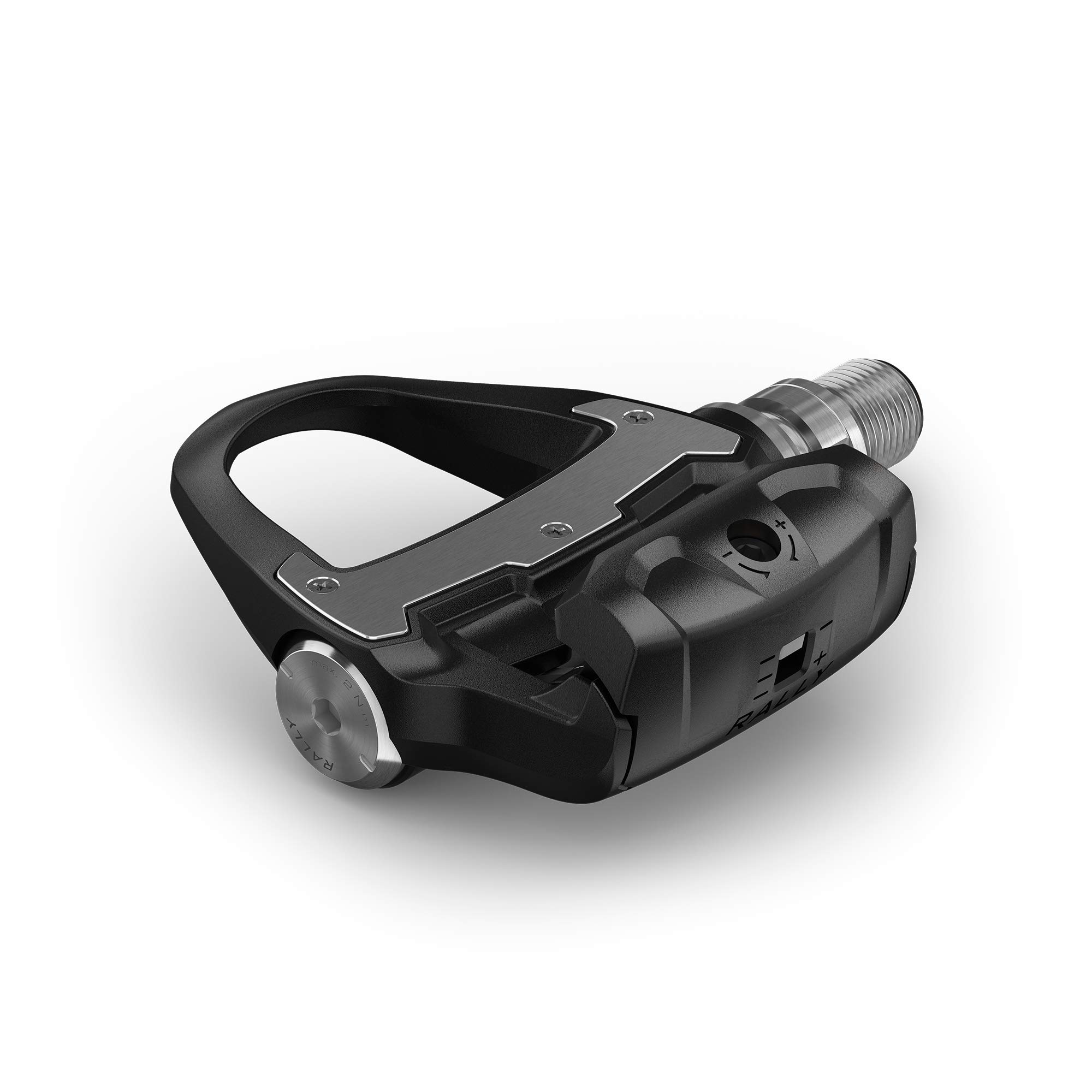Finding the FTP
Functional Threshold Power is the power one can maintain during a one-hour cycling effort. FTP is the central point for cyclists and triathletes who want to improve their performance, structure their workouts, and track their progress. You can calculate your FTP precisely by taking a 20-minute time trial on a stationary bike and arduously pushing yourself to keep your highest power output. Multiply the power you obtain in 20 minutes by 0.95 to get your FTP. This number will help you structure your training intensities and track improvements in your strength and endurance .
Using Power Data to Train More Efficiently
To track your power accurately and use these measures to structure training, you can divide your power data into zones based on your FTP. For example, base training usually includes spending more time training in endurance or active recovery zones, e.g. 50-60% FTP. High-intensity intervals will focus on the VO2 max zone, e.g. 106-120% of FTP , depending on your data. Different zones help train specific physiological functions. For example, training in the endurance zone aims to develop the aerobic system. VO2 max zone, on the other hand, shoots for increasing oxygen utilization and intensity, in order to improve anaerobic capacity and muscular endurance.
Getting Started with Power-Based Training
To start training with power, try at least 2-3 workouts per week, targeting different power zones. For example, start with a long ride at 65-75% of FTP to build endurance and follow it with short intervals at 95-105% of FTP to improve your threshold power. Adjust your training according to your goals and fitness level. Finally, always remember to carefully plan your rest periods to avoid overtraining.
Monitoring Progress and Readjusting Workouts
Similarly, you can retest your FTP power every month to adjust the intensities of your workouts. Any improvement in your FTP is an indicative of not only increased power output during cycling but also of your body adapting more efficiently to your training process. Adjust intensity based on your new FTP to make sure your workouts are tough enough to drive your improvement.

Case Studies & Practical Applications
For example, imagine a case of a triathlete whose FTP rose from 250 watts to 300 watts during the season. Increased intensity helped reduce the bike portion of the race and, moreover, caused the athlete to feel less tired along the way. Such practical examples highlight the necessity of power-based training for cyclists and triathletes.
Determine Your Training Zones
Training zones are essential to cycling training because they enable you to engage specific energy systems and physiological reactions. Firstly, you need to determine your Functional Threshold Power , as previously examined. Then, you can compute your training zones, each of which is a percentage of your FTP. Notably, these zones are intended to target various aspects of your fitness.
Training Zones
Here is a general overview of training zones:
Zone 1 – Active Recovery: Less than 55% of FTP. It is designed for the days after you have exerted significant efforts to promote recuperation.
Zone 2 – Endurance: 56-75% of FTP. It facilitates the development of aerobic endurance and the body’s capacity to use fat as fuel.
Zone 3 – Tempo: 76-90% of FTP. This zone enhances muscular endurance and the body’s aerobic capacity.
Zone 4 – Lactate Threshold: 91-105% of FTP . It is utilized to boost the ability to exert a high power output for protracted periods. It also impacts your threshold power.
Zone 5 – VO2 Max: 106-120% of FTP. It develops high-power aerobic capability and maximum speed.
Zone 6 – Anaerobic Capacity: 121-150% of FTP. It is useful for elevating short burst power to push uphills or for sprints within a race.
Zone 7 – Neuromuscular Power: More than 150% of FTP. It is for use in improving the application of power generation and speed.
Utilizing Training Zones in Workouts
Plan your week with a balance of these zones to reap the most benefits from your efforts and achieve a balance between rest and exertion. For instance, if your goal is building endurance, the focus should fall on being within Zones 2 and 3 as frequently as possible. Conversely, if you are training for a race with various climbs, ensure that there are more sessions within Zones 5 and 6 to enhance your climbing ability. A representation of a workout in such zones is a 10-minute warm-up in Zone 1, followed by 3 x 15-minute intervals in Zone 4 with a 5-minute rest in Zone 1 between each and a 10-minute cool-down in Zone 1. Such a workout not only improves your threshold power but also increases the body’s ability to recover from repeated efforts.
Assessment of FTP and Adaptation of Training Zones
It is essential to check the efficiency of your training every few weeks by repeating the FTP assessment. If you feel no pressure to complete the recommended segments or, on the contrary, if you cannot complete the workout, consider reassessment. Following the wrong training plan can make performance gains difficult, so adjust your zones as needed.
Structure Your Training
Structuring your training refers to planning your cycling workouts around your power zones to maximize performance improvements. Every session you plan must have an objective: developing your endurance, enhancing the speed, or facilitating a better recovery . As such, the key to effective training is to consider how these objectives relate to your physical capacities and main race goals.

Weekly plan
A general weekly plan might look as follows:
Monday: active recovery . Spend 30-60 minutes cycling in zone 1 – a light session that may help you de-stress from the hardness of the past week.
Tuesday: interval training . Perform in zone 4 or 5. Example: 5 x 5’ at 105% of FTP with 5 minutes easy in-between.
Wednesday: endurance. 2-3 hours in zone 2 focusing on developing the aerobic capacity without too much stress.
Thursday: tempo . 1h in zone 3 where the effort helps to improve the ability to maintain moderate intensity for a more extended period.
Friday: rest day . Either full rest or a light activity as yoga or swimming.
Saturday: long ride . 3-4 hours where you can merge zone 2 and zone 3 with some short bursts in the zone 4. It will simulate the race conditions while not flooding the organism with the hard work from the race simulations.
Sunday: group ride/race simulation . A diverse ride, but as a rule, you can plan some intensity at zone when reaching the tops of the hills.
Planning for the season
Adjust the off-season and closer-to-the-race season training plans in terms of intensity and volume. The off-season should include more base building, which means longer rides at the lower zones. Closer to the race season, the volume of work in the higher zones should be increased to peak the condition.
Monitoring and adjustments
Always pay attention to the numbers and how your body feels. Use the power meters or/and the heart rate monitors to track both the output and the effort. If you repeatedly cannot deliver the power you are expected to, or you consistently feel tired, you may be overtraining. The need to consider the cancelation of the harder efforts or the volume reduction to allow the proper recovery. Remember that every session, no matter how easy, should have a purpose in your training.
Use Key Workouts
Introduction
Key workouts are the backbone of any training program focused on power data. They are designed to cater to your training needs by raising your fitness with workouts that target specific power zones related to your goal. Combining these workouts in your training schedule will mean that you are not only putting the miles in but you are also training smart to be better prepared for a wide range of physiological capabilities.
Threshold Intervals
These are periods of time that are aimed at increasing your FTP, enabling you to put out high powers for extended durations. The key workout is spaced according to the structure given below:
- After warming up for 15 minutes in Zone 1 each, ensure you are in position to start your intervals.
- Do your first set on a number ranging from 2 to 4 at 20-minute intervals between 95-105% of your FTP in Zone 3.
- Also after each interval, recovery should follow in Zone 1.
- To end your workout, cool down properly with a 10-minute interval in Zone 1. The threshold intervals tend to push your lactate threshold upwards which in turn raises the bar for your endurance as well as on the race day.
VO2 Max Intervals
VO2 Max is another variation of intensity which is used to develop your aerobic capacity. It means that you can go longer into an effort before fatigue starts to set in. The workout is conducted in the structure as given below:
- Begin with a 20-minute warm-up in either Zone 1 or 2.
- Execute another 4 to 6 intervals each lasting from 3 to 5 minutes at attainable powers of between 110-120% of your threshold values.
- Having followed these sequence of intervals, have a 3 and similar time for recovery.
In the same intensity as the first warm-up given, you should finalize the workout with a 15-minute cooldown. Since it is a very high output workout, it is healthy to conduct in once or twice in a week, at most.
Track Your Progress
When training with power data, keeping track of the progress is essential to understand how effectively you training plan works and whether your cycling performance improves this way. In general, this means measuring and analyzing power outputs regularly, during workouts and competitions, and using these data points to make informed changes to your training plan. The following recommendations can help in this:
Establish your baseline metrics. Do the initial FTP test to determine the baseline level and record key outputs for each workout that you perform. In addition to FTP, record AP, or average power, your peak power for every relevant duration, heart rate data, and all other relevant metrics. Keep track of these numbers in a training log or use software, such as TrainingPeaks or Strava, that does this automatically.
Keep testing your FTP on a regular basis. Normally, it is recommended to retest the functional threshold power every six to eight weeks. Comparing these test results will enable you to understand how your training zones and power outputs are adjusted and how they translate into improvements. If your FTP increases, it means that your training works and that your endurance and power get better.
After every key workout, analyze the power data and review whether you stayed in your target zones. Also, pay attention to such aspects as duration of the intervals you performed and how it corresponds to your zones, as well as how your body responded to these efforts in terms of heart rate and subjective perception of the exertion. This will help you adjust the intensity or volume of future workouts being aware of how well your body is adapted which efforts.
Use races as tests and analyze your power output during these races. Look at how much power you were able to output and where you can improve. For example, if you had to hold back and did not run out of power during the middle section, it may mean that you need more endurance or anaerobic training. Use advanced cycling software that calculates CTL, ATL, and TSB scores to keep track of your training load, stress, and recovery needs and to use predictive analytics.




